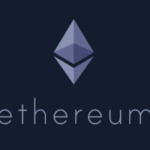Venture Capital Firm Criticizes Ethereum and Layer-2 Solutions, Backs Dash: Discover the Reasons

Ethereum developers are actively engaged in the creation of on-chain scaling solutions such as Sharding, while layer-2 scaling solutions are gaining momentum. According to L2Beat, as of September 6, these layer-2 scaling solutions collectively managed nearly $34 billion.
Despite their popularity, many of these solutions are not only showing signs of centralization but also raising security concerns. For instance, the OP Mainnet had to revert to a centralized fault-proof system after identifying vulnerabilities in its decentralized version.
Criticism has been directed towards Ethereum and its layer-2 platforms by Justin Boons, the founder and CIO of Cyber Capital. Boons highlighted the fundamental flaws and centralization tendencies of layer-2s like Arbitrum and Base. He expressed concerns about the lack of proper scaling post-launch and the growing reliance on what he termed as “parasitic” layer-2 solutions, emphasizing the unhealthy dependency they create.
Boons emphasized that Ethereum’s increasing reliance on these solutions, despite their departure from the blockchain’s decentralized principles, is a cause for concern. He believes that Ethereum layer-2s are leveraging the mainnet’s popularity not to enhance adoption but for profit-driven motives.
In contrast to the criticism towards Ethereum, Boons praised Dash, an early blockchain platform that prioritized scaling from its inception and adopted a decentralized governance approach, which he believes will be advantageous in the future.
While challenges persist with layer-2 solutions, Ethereum developers are actively working on refining the mainnet. The upcoming Ethereum 2.0 upgrades aim to achieve on-chain scaling without compromising security and decentralization through a series of improvements, from the Verge to Splurge.
The approval of spot Ethereum ETFs signifies a significant endorsement of the network, although the SEC is yet to publicly classify ETH as a commodity like Bitcoin. However, the CFTC recognizes Ethereum as a commodity.
Despite being an early platform, Dash has faced a decline in prominence in recent years, falling outside the top 100 networks and encountering liquidity issues after being delisted from certain centralized exchanges.
In conclusion, the debate between Ethereum’s layer-2 solutions and decentralized platforms like Dash underscores the ongoing evolution and challenges within the cryptocurrency ecosystem. The pursuit of scalable, secure, and decentralized solutions remains a focal point for developers and investors alike.


